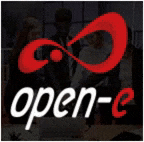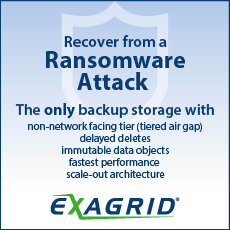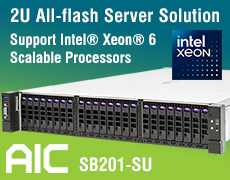Exclusive Interview With Nathan Thompson, CEO, Spectra Logic
In storage business since 42 years, founded when he was 19-year old
By Philippe Nicolas | November 2, 2021 at 2:02 pm Nathan Thompson, 61, is CEO and chairman of Spectra Logic, a company he founded in October 1979 at the age of 19 during his time at the University of Colorado College of Engineering in Boulder, CO. At that time the firm was named Western Automation and it renamed itself as Spectra Logic Corporation in 1993 following the acquisition of an interface firm known as Spectra Logic. Beyond working and spending time with his family and traveling, Thompson is an airplane pilot for 40 years. He also collects, restores and repairs pinball machines with a pretty unique collection.
Nathan Thompson, 61, is CEO and chairman of Spectra Logic, a company he founded in October 1979 at the age of 19 during his time at the University of Colorado College of Engineering in Boulder, CO. At that time the firm was named Western Automation and it renamed itself as Spectra Logic Corporation in 1993 following the acquisition of an interface firm known as Spectra Logic. Beyond working and spending time with his family and traveling, Thompson is an airplane pilot for 40 years. He also collects, restores and repairs pinball machines with a pretty unique collection.
Editor’s note: Private company since 1979, Spectra Logic never revealed its revenue and was not able to make an IPO. Owler estimates its annual sales between $25 million and $100 million, and D&B Hoovers at $91.52 million. It is concentrated on a niche market, very-high capacity tape robotics with management software like firms including Qualstar, Quantum, Oracle, and IBM, but with uncertain future in a global tape market decreasing.
StorageNewsletter: You founded Spectra Logic 42 years ago, could you share with us the roots and what invited you to launch the company, in what business and industry contexts?
Nathan Thompson: Spectra Logic has been in the storage business for 42 years. I started the business in 1979 in Boulder, Colorado, while attending the University of Colorado. The company is still headquartered in Boulder, CO with a WW customer base. Over the course of our existence, we have developed a philosophy that Spectra Logic will always operate in parallel, meaning that we will market, distribute and support current solutions while also designing the “next big thing”. We recognize that dynamic data storage requirements demand new solutions and we invest heavily in R&D to respond. There have been numerous times in the evolution of Spectra where we have stepped forward to pioneer new products that address current and changing customers’ needs. For example, Spectra launched StorCycle®, a storage lifecycle management software, a few years ago when it became clear that our customers needed an easy way to migrate data off of expensive primary storage to a less expensive storage tier designed for long-term data access and preservation. With StorCycle, our customers have reduced their total cost of storing data while continuing to have access to their data.
Spectra is still a private company and obviously your finances are not public, I understand you have never raised any money from VCs. Can you provide any figures to help us understand the size of your business? Any plan for an IPO and do you need to go public?
Spectra has been a private company since its inception. This structure has helped the company stay nimble and responsive so that we can quickly address customer requirements without the added burden of having to meet quarterly and annual investor expectations. Furthermore, we are 100% employee owned with over 75% of our approximately 400 worldwide employees as shareholders and/or option holders.
This allows us for periods of time to invest heavily in R&D. For the last 7 to 8 years we have invested approximately 20% of our revenue in R&D every year.
These investments have enabled us to transform our portfolio, including software, hardware, and software-enabled hardware products. An example of a combined hardware and software product would be our new Attack-Hardened storage solutions, which are designed to be ransomware resilient while meeting customer storage needs.
While we do not disclose our financials, we are very excited about the expanding market opportunities for our distributed multi-cloud data management software and our multi-purpose hybrid storage solution set. We believe that our slate of new products is in line with what organizations need today to safely store, manage, access and preserve their data – whether on-premises, in the cloud or in multiple clouds.
Spectra is well known for its tape business historically deployed at some of the largest data sites. You introduced in the last decade some data management products such as StorCycle. What is the mission of the company today?
We help our customers use, store and preserve their data to further their organizational missions. Customers including government agencies, businesses, religious organizations, media companies, research organizations, educational institutions, and even cloud vendors.
We are known and trusted as a storage company, which has given us the foundation to deliver a new generation of data management and storage solutions. Products like BlackPearl, released about a decade ago as a solution to make tape easier to use, continue to evolve, now as a scale-up NAS solution and S3 target. And products like StorCycle have expanded our portfolio into data management software. We also recognize that the future is not only cloud, but multi-cloud – which in many cases includes on-premises storage.
From our own experiences, we know that our customers are wrestling with mounting internal and external cyberattacks such as ransomware that threaten company brands and bottom lines. Spectra’s transformation has led to a portfolio of data management and storage solutions that are attack hardened to help customers modernize their data centers, thwart cyberattacks and leverage all the benefits that this multi-cloud future has to offer.
How do you explain this addition of software to your portfolio?
If you look at one of our hardware products over time, such as the TFinity Tape Library or the BlackPearl solution, more than 90% of the overall engineering investment is in software development and test. Also, for many years, Spectra has delivered ‘combined’ software and hardware solutions for the M&E market to address content management. So clearly we have the technical talent and expertise to develop and maintain software.
The fact that Spectra now also delivers storage, security and data management software is a natural progression of years of storage and software development expertise. Our software products allow to provide a much broader solution set to our customers, which may or may not include our hardware products.
What changed on the market or in Spectra to jump into software again as you once had Alexandria, a high performance backup software, many years ago that you sold to Sterling Software?
About 20 years ago, Spectra had a backup software product named Alexandria, along with some low-end 4mm and 8mm tape libraries. In 1999, we concluded that we did not have the resources to manage both product lines, so we sold the software division. The proceeds from that sale allowed us to fully fund our tape library business and BlackPearl product line, which enabled our company to grow 10-fold in revenue from our previous size.
I think it was inevitable that Spectra would re-enter the software business. Since the sale of Alexandria, we kept our eyes open for opportunities – and have narrowed our focus to storage and data management. About 10 years ago, we realized that we would have sufficient resources to fund significant software development, marketing initiatives and sales engagement to augment our solution set with software products.
Spectra builds among the largest tape libraries on the market, what are the latest news around TFinity and its companion like T950 among others?
The TFinity Tape Library is now the world’s largest tape library, delivering the greatest flexibility, density and performance on the market. As an example, it is capable of storing 1EB of uncompressed data with LTO-9 technology. Beyond integrating LTO, it also supports IBM’s TS and Oracle’s T10000 tape drive technologies and media. And our T950 Tape Libraries are recognized for maximum density, scalability and longevity.
You can expect further innovations with these products – particularly when operating in conjunction with our BlackPearl and software products. Most of your readers are familiar with Amazon’s S3 and Glacier storage solutions. Using our new Vail Distributed Multi-Cloud Data Management software, a T950 or TFinity tape library can be used as a giant on-premises S3/Glacier storage repository. This single object storage namespace allows users to seamlessly store and access data, whether in public clouds (such as Amazon’s AWS, Microsoft’s Azure, Google’s GCP, Wasabi’s cloud, and others) or in multiple on-premises locations spread around the globe.
We’re encouraged by our strong tape sales and by the fact that Spectra’s tape libraries have been chosen to safeguard some of the world’s most prestigious organizations, such as British Film Institute, Imperial War Museums, Lawrence Livermore National Laboratory, Minnesota Supercomputing Institute, Oak Ridge National Laboratory, Rutherford Appleton Laboratory and University of Bristol, to name a few.
You choose to be tape agnostic, you support IBM TS11xx or LTO and even in the past other technologies. LTO-9 arrived late on the market. How do you see the LTO trajectory in general?
The digital tape business for backing up primary disk systems has seen year-to-year declines as IT backup has moved to disk-based technology. At the same time, however, the need for tape in the long-term archive market continues to grow. Tape technology is well suited for this space as it provides the benefits of low environmental footprint in both floor space and power; a high level of data integrity over a long period of time; a much lower cost per gigabyte of storage than any other storage medium; and ransomware protection through a physical air gap. LTO technology has been and will continue to be the primary tape technology. The LTO consortium has a strong roadmap with a path to 360TB per cartridge. Customers with high duty-cycle requirements can consider using enterprise drives from IBM, which is now shipping IBM® TS1160 tape technology with a native capacity of 20TB. Spectra still has many customers running Oracle’s T10000 tape drives and media, which we also support in our libraries.
You’re transparent with a cyberattack you had last year and how you recovered from it. We also saw that the product team learned from that by adding some key new features in your portfolio, any details on these additions within your product line?
As you mentioned, Spectra experienced a ransomware attack in May 2020. We survived the attack and did not pay the almost $4 million ransom – and totally avoided any exfiltration of (our) data. I have to say there was an element of luck that aided our survival. After our recovery, we became committed to eliminating any future need for “luck” regarding ransomware going forward.
That experience influenced a refinement of our entire product set, which we have fortified with a number of features to make them even more ransomware resilient. For instance, our BlackPearl Platform incorporates encryption, immutable snapshots, replication, and multi-factor authentication to create an impenetrable wall between an organization’s data and the threats which are constantly surrounding that data. For StorCycle, we added several features, including one that enables the software to initiate snapshots of BlackPearl volumes at the end of migrate jobs, and optionally maintain immutable read-only status of volumes. Our Spectra Stack Library includes a cold partition that locks tapes so that they cannot be overwritten or loaded into a drive if ransomware takes control of the tape library itself. Of course, Spectra’s tape media provides the ultimate in air gap protection against cyberattacks when stored offsite and offline. And Spectra’s full line of tape libraries will offer additional attack-hardened features in early 2022.
You recently announced Vail, a distributed multi-cloud data management software and it confirms a new trend on the market illustrating the gravity of data. So what is it in detail and what can we do with it?
As organizations everywhere look to incorporating the benefits of cloud into their operations, it becomes clear we need a more intelligent way to store and move data across multiple sites and multiple clouds; integrate data with cloud services no matter where that data resides; and allow universal data access in a seamless and secure way.
In response to that need, Spectra started developing Vail 4 years ago as a distributed multi-cloud data management software solution that unifies customer data, allowing customers to leverage on-premises applications and native cloud services, no matter where data is created or stored.
Currently the management of data between clouds and sites is either manual or unique to each workflow. Vail unifies and simplifies data in a single global namespace across on-premises, multiple clouds, and multiple storage platforms. It offers server-less cloud- based management that brings the agility of public cloud to an on-premises infrastructure.
Beyond tape and spin down disk, how do you see the next storage technologies such as glass, holographic or DNA storage and their role in long-term data preservation?
Spectra keeps a close watch on what might be coming next in storage. Though these and other efforts have the potential to revolutionize storage, it is difficult to believe that any are mature enough at this point in time to significantly impact the digital universe through at least 2030. Historically many storage technologies have shown promise in the prototype phase, but have been unable to make the leap to production products that meet the cost, ruggedness, performance, and most importantly, reliability of the current technologies in the marketplace. Spectra continuously explores all potential storage technologies and contributes to industry forums and discussions as we anticipate emerging trends and requirements. We analyze the state of the storage industry and underlying technologies and annually publish our research and predictions. The latest report can be accessed on our website at this address.
As a leader in on-premises secondary storage, what about your cloud strategy? We see that Vail is a way to bridge clouds and develop a hybrid model.
Spectra takes a cloud-agnostic approach to our cloud strategy. We want to help customers who have been trying to move into the cloud, who have already moved into the cloud, or who have a hybrid architecture where they must keep some data on-premises and some in the cloud or multiple clouds. We developed our Vail software solution to provide true unification for users so that their workflows can dynamically work across on-premises locations and in multiple clouds, no matter where the data is stored or processed. Ultimately, we designed Vail to help customers leverage the flexibility and agility of cloud services while keeping data locally when needed, allowing egress optimization for lowest cost and fastest data access from available storage.
What is the direction of the company as Vail represents one of the new directions in development? We see that the company morphed from being a device or storage target vendor to a data management player.
We see a few trends that will impact the future of our company and product development. Organizations are challenged with extraordinary data growth that is creating a need to balance the cost of storage and the speed of access – literally what data, at what time, should be stored on what storage medium. Cloud is changing the way organizations not only store, but use, their data. The question isn’t cloud or not, but what data needs to be in the cloud, on-premises, or both, and when. Workflows are getting more complex and seamless integration of applications regardless of location need to be supported. Storage solutions must be cost effective to support data growth and universally accessible by data users wherever they are located. Spectra will continue to invest above the industry average in R&D to address the needs of our customers – and Vail, our new software, is an example of that major investment.
What does the future look like for Spectra and your customers?
The future looks bright for Spectra and our customers. While the pandemic impacted the world in ways we couldn’t have imagined, it also unveiled the unique advantages of cloud, hybrid cloud, and multi-cloud approaches to accessing, storing, collaborating, using and preserving data. We expect Spectra’s track record of success in advancing storage and data management strategies to continue as we see further customer adoption of Vail and our BlackPearl Platform solutions.
While there is no one-size-fits-all formula when it comes to data usage, management and protection, as I wrote in my book, Society’s Genome, Genetic Diversity’s Role in Digital Preservation“, it is vital for organizations to protect their data on multiple mediums, in multiple places, and on multiple copies. As a company that develops storage hardware and data management software, we embrace the cloud with the full recognition that disk, object storage, and tape all have equally significant roles to play in ensuring that the world’s treasury of data remains accessible, safe and secure for generations to come.













 Subscribe to our free daily newsletter
Subscribe to our free daily newsletter

